#animation techniques
Explore tagged Tumblr posts
Text

#experimental animation#animation#artists on tumblr#gif#animated gif#art#loop#stop motion animation#stop motion#animated film#animation test#animation techniques#hands#collage art#collage#memories escaping
9 notes
·
View notes
Photo
@choppers-pink-hat

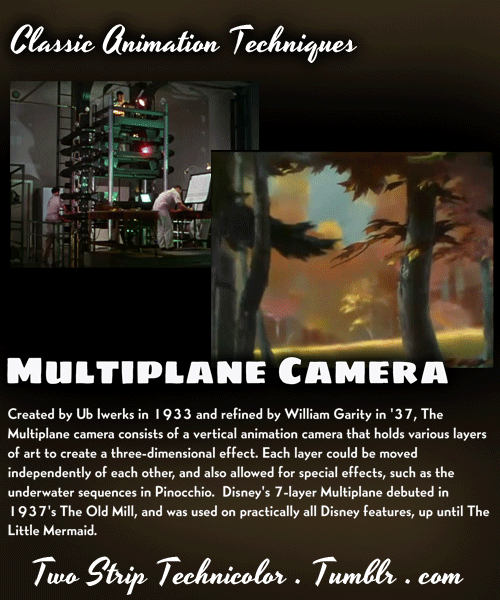
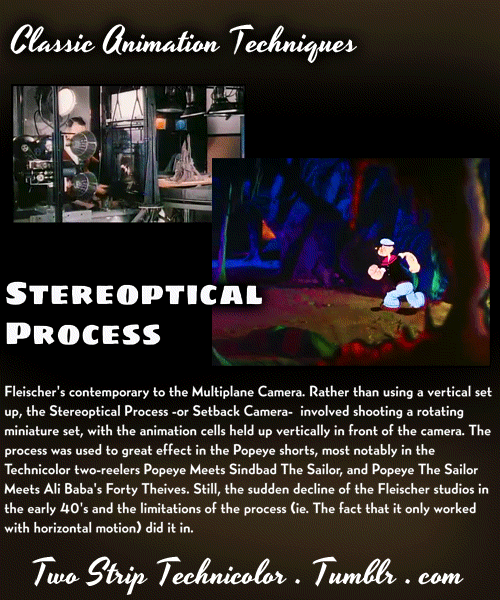


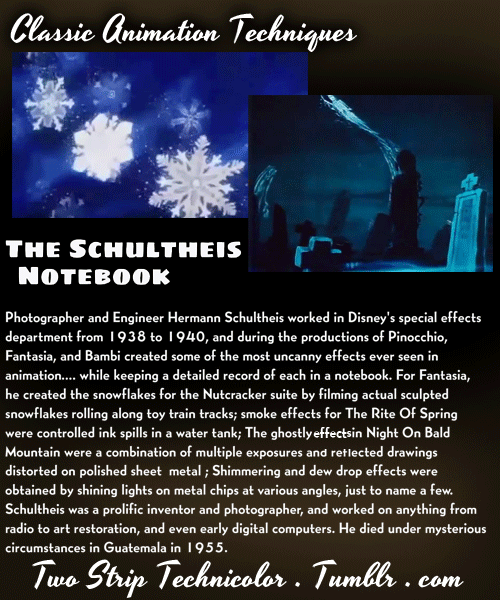

Animation techniques and effects from the classic era. For more vintage movie geekery, check out my Old Hollywood Special Effects, and my Early Color Film Processes posts! (And while you’re at it, take a look at my art blog, why don’t ya?)
114K notes
·
View notes
Text
Yall does anyone else animate on 1’s in 10 FPS??? This is always how I’ve done it even though I’ve always known the typical way, it just came naturally to me?? Please tell me I’m not the only one
0 notes
Text
The Magic of Animation: Bringing Imagination to Life

Animation is a captivating art form that transcends the boundaries of reality, allowing us to explore fantastical worlds, meet extraordinary characters, and experience stories that touch our hearts and minds. From classic cartoons to cutting-edge CGI, animation has evolved significantly, becoming an integral part of our entertainment landscape. In this blog post, we'll delve into the magic of animation, its evolution, and its impact on storytelling and culture.
The Evolution of Animation
The journey of animation began long before the advent of computers. Early pioneers like Walt Disney and Max Fleischer experimented with hand-drawn techniques, creating iconic characters such as Mickey Mouse and Betty Boop. These early animations were painstakingly crafted, frame by frame, requiring immense patience and creativity.
With technological advancements, the animation industry witnessed a revolution. The introduction of computer-generated imagery (CGI) opened new horizons, allowing animators to create more detailed and realistic visuals. Pixar's "Toy Story," released in 1995, was the first fully CGI feature film, marking a significant milestone in the animation world. Today, studios like Disney, Pixar, and DreamWorks continue to push the boundaries, producing visually stunning films that captivate audiences worldwide.
The Art of Storytelling
At its core, animation is a powerful storytelling medium. It has the unique ability to convey complex emotions and narratives in a visually engaging way. Through animation, creators can explore themes ranging from love and friendship to heroism and adversity, often using metaphors and symbolism that resonate deeply with viewers.
Animated films and series are not just for children; they appeal to all age groups. For instance, Studio Ghibli's "Spirited Away" and Pixar's "Up" are beloved by audiences of all ages for their rich storytelling and emotional depth. Animation transcends language barriers, making it a universal form of expression that can connect with people from diverse cultures and backgrounds.
Animation Techniques
There are various techniques used in animation, each with its unique charm and style:
2D Animation: This traditional form involves creating movement in a two-dimensional artistic space. Classic examples include Disney's "The Lion King" and "Beauty and the Beast." Despite the rise of 3D, 2D animation remains popular for its distinct aesthetic and nostalgic appeal.
3D Animation: Utilizing computer graphics, 3D animation creates lifelike characters and environments. Movies like "Frozen" and "Toy Story" showcase the depth and realism achievable with this technique.
Stop Motion: This technique involves photographing objects frame by frame to create movement. Films like "Coraline" and "The Nightmare Before Christmas" are prime examples of the intricate artistry involved in stop-motion animation.
Motion Graphics: Often used in advertising and media, motion graphics combine animation and graphic design to convey information dynamically. They are ideal for explainer videos, title sequences, and promotional content.
The Impact of Animation
Animation's influence extends beyond entertainment. It plays a crucial role in education, advertising, and even healthcare. Educational animations make learning engaging and accessible, while animated advertisements capture consumer attention and convey messages effectively.
In healthcare, animation helps visualize complex medical concepts, making it easier for patients to understand their conditions and treatments. Virtual reality (VR) and augmented reality (AR) technologies, which heavily rely on animation, are revolutionizing fields such as medicine, engineering, and architecture.
The Future of Animation
As technology continues to evolve, the future of animation looks incredibly promising. Innovations such as artificial intelligence (AI) and machine learning are beginning to impact the animation industry, streamlining processes and opening new creative possibilities. Virtual reality (VR) and augmented reality (AR) are also set to revolutionize how we experience animated content, offering immersive experiences that blur the lines between the digital and physical worlds.
Conclusion
Animation is a magical art form that brings imagination to life, captivating audiences with its ability to tell stories in visually stunning ways. From its humble beginnings to the cutting-edge technologies of today, animation continues to evolve, pushing the boundaries of creativity and innovation. Whether it's a heartwarming tale, an educational video, or an immersive VR experience, animation has the power to inspire, educate, and entertain like no other medium. As Animation Studio looks to the future, the possibilities for animation are limitless, promising even more extraordinary journeys into the realms of imagination.
#animation#animation history#2D animation#3D animation#CGI#stop motion#motion graphics#storytelling#animation techniques#animation impact#future of animation#VR animation#AR animation#educational animation#animated films#Pixar#Disney#Studio Ghibli#animation industry
1 note
·
View note
Text
youtube
#After Effects tutorial#Social media post animation#Animation techniques#Motion graphics#Adobe After Effects#Design principles#Typography#Keyframe animation#Color theory#Engagement strategies#Digital creativity#Graphic design tutorial#Social media marketing#social media post animation after effects#motion graphics templates#adobe after effect tutorial in hindi#motion graphics#motion design#motion graphics designer#animated graphics#motion design studio#Youtube
1 note
·
View note
Text
#Animation Techniques#VGEN MEDIA#Gaming Industry#3d animation#anime art#evolution#animators on tumblr#Top Animation Studio In Dubai#Top Media Company In Dubai#Top Video Production Company In Dubai#Budget Friendly Projects#medium
1 note
·
View note
Text
Don't Sweat the Technique (Vultures Are Easy)
Dance below the cut
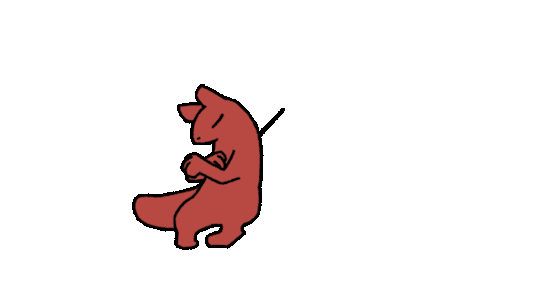
Boogie on Hunter!
Based on the way I actually dance in real life. The gameplay clips are also mine. It turns out drawing backgrounds in Flipaclip is not great, and it's better to draw them out of program to import later. Aggressive Inline (2002) for Gamecube changed my 7 year old brain chemistry the same way Rain World is doing right now.

#rain world#rw hunter#rw artificer#rw spearmaster#my art#my animation#don't sweat the technique#eric b & rakim#pashdraw
3K notes
·
View notes
Text

*immediately loses their cool* lmao 🤓 // linework >> grayscale // ko-fi
#so in sync that they're workin' together when they're picking each other APART AAHHHHHH!!!!!!!!!!!!!!!!#lol forget the interrogating i'M GONNA KISS MY WIFFFEEEEEE lmao#yor uses seductive techniques for the first time and it's super effective and this super spy is like OMG...... I GUESS I SHOULD GIVE IN#like yas give in lol PLEASE#twiyor#twiyor month#loidyor#twiyor smut#loid x yor#loid forger#yor forger#yor briar#agent twilight#thorn princess#sxf#spy x family#spy family#spy x family art#twiyor fic#pjseveryday#illustration#art#anime art#fanart#digital illustration
1K notes
·
View notes
Text

Quick animation using that capeless moth 😶 (Hay fever, with no nose?)
#sky: children of the light#thatskygame#sky: cotl#my art#digital animation#I've been having fun with this technique#working in a looser style like this lends itself to more spontaneity too#sky children of the light#sky cotl#animation#digital art
421 notes
·
View notes
Photo
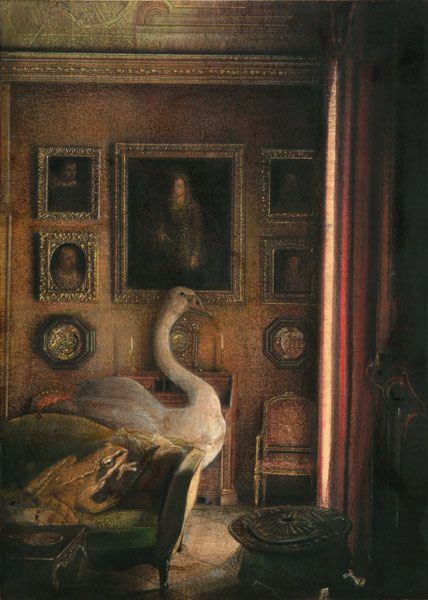

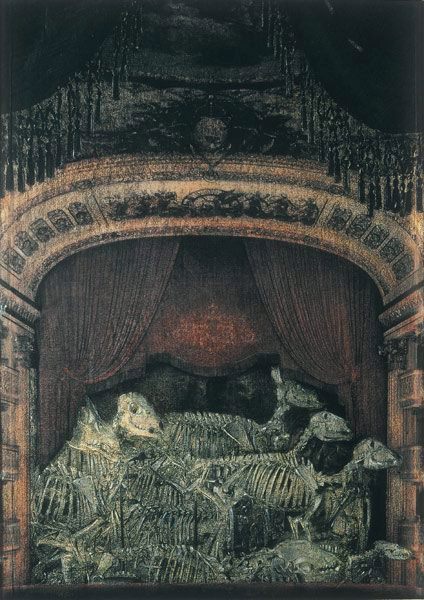

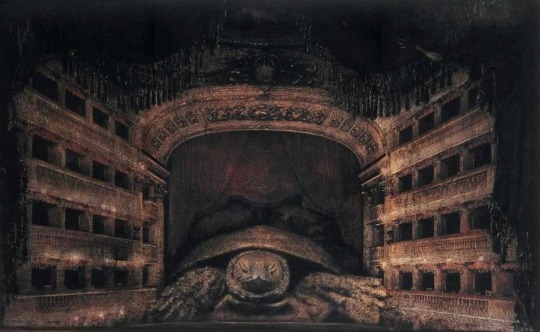
Francesco Balsamo (Italian, b.1969)
#francesco balsamo#art#contemporary art#mixed technique#mixed media#fantasy#animals#oniric#vintage#room#interior
4K notes
·
View notes
Text
I grew a spine
#well!#this is my first attempt at uhh oil painting animation and I think it's pretty good for the first time!#I see a lot of things that I can improve next time#yes - this was made with tlt in mind because I am very interested in experimenting with visuals of necromancy and stuff#but I don't know if i should tag it... because it doesn't look too connected yet?#animation#my art#btw these 5 seconds have almost 50 frames. I think I've spent around eight hours painting and four editing#I just took pictures with my phone so light and perspective were changing. it's FAR from perfect. but it works to just try out a technique#my animation
538 notes
·
View notes
Text
Humans are so cute. They think they can outsmart birds. They place nasty metal spikes on rooftops and ledges to prevent birds from nesting there.
It’s a classic human trick known in urban design as “evil architecture”: designing a place in a way that’s meant to deter others. Think of the city benches you see segmented by bars to stop homeless people sleeping there.
But birds are genius rebels. Not only are they undeterred by evil architecture, they actually use it to their advantage, according to a new Dutch study published in the journal Deinsea.
Crows and magpies, it turns out, are learning to rip strips of anti-bird spikes off of buildings and use them to build their nests. It’s an incredible addition to the growing body of evidence about the intelligence of birds, so wrongly maligned as stupid that “bird-brained” is still commonly used as an insult...
Magpies also use anti-bird spikes for their nests. In 2021, a hospital patient in Antwerp, Belgium, looked out the window and noticed a huge magpie’s nest in a tree in the courtyard. Biologist Auke-Florian Hiemstra of Leiden-based Naturalis Biodiversity Center, one of the study’s authors, went to collect the nest and found that it was made out of 50 meters of anti-bird strips, containing no fewer than 1,500 metal spikes.
Hiemstra describes the magpie nest as “an impregnable fortress.”
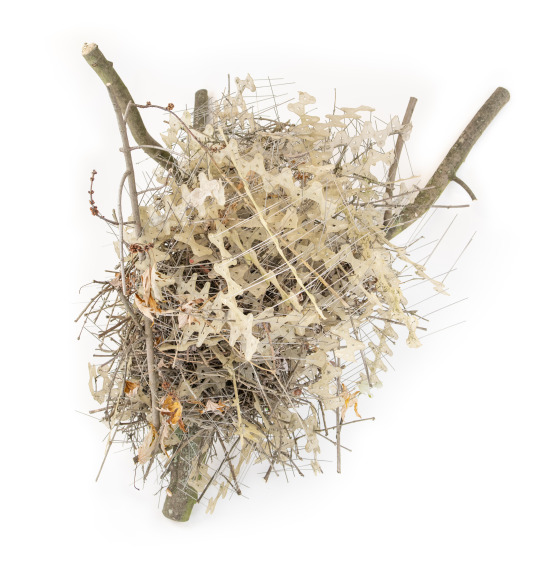
Pictured: A huge magpie nest made out of 1,500 metal spikes.
Magpies are known to build roofs over their nests to prevent other birds from stealing their eggs and young. Usually, they scrounge around in nature for thorny plants or spiky branches to form the roof. But city birds don’t need to search for the perfect branch — they can just use the anti-bird spikes that humans have so kindly put at their disposal.
“The magpies appear to be using the pins exactly the same way we do: to keep other birds away from their nest,” Hiemstra said.
Another urban magpie nest, this one from Scotland, really shows off the roof-building tactic:
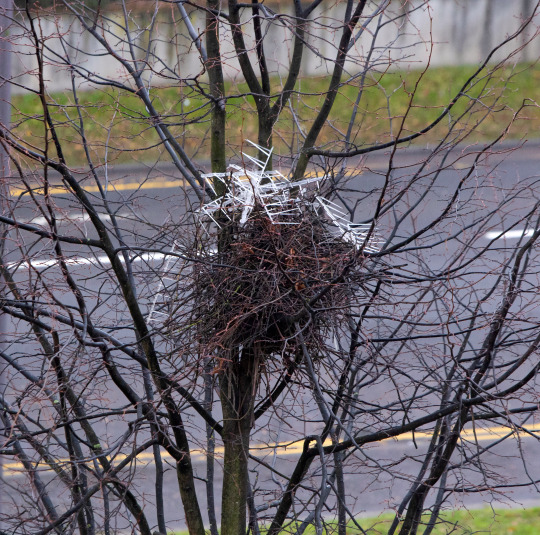
Pictured: A nest from Scotland shows how urban magpies are using anti-bird spikes to construct a roof meant to protect their young and eggs from predators.
Birds had already been spotted using upward-pointing anti-bird spikes as foundations for nests. In 2016, the so-called Parkdale Pigeon became Twitter-famous for refusing to give up when humans removed her first nest and installed spikes on her chosen nesting site, the top of an LCD monitor on a subway platform in Melbourne. The avian architect rebelled and built an even better home there, using the spikes as a foundation to hold her nest more securely in place.
...Hiemstra’s study is the first to show that birds, adapting to city life, are learning to seek out and use our anti-bird spikes as their nesting material. Pretty badass, right?
The genius of birds — and other animals we underestimate
It’s a well-established fact that many bird species are highly intelligent. Members of the corvid family, which includes crows and magpies, are especially renowned for their smarts. Crows can solve complex puzzles, while magpies can pass the “mirror test” — the classic test that scientists use to determine if a species is self-aware.
Studies show that some birds have evolved cognitive skills similar to our own: They have amazing memories, remembering for months the thousands of different hiding places where they’ve stashed seeds, and they use their own experiences to predict the behavior of other birds, suggesting they’ve got some theory of mind.
And, as author Jennifer Ackerman details in The Genius of Birds, birds are brilliant at using tools. Black palm cockatoos use twigs as drumsticks, tapping out a beat on a tree trunk to get a female’s attention. Jays use sticks as spears to attack other birds...
Birds have also been known to use human tools to their advantage. When carrion crows want to crack a walnut, for example, they position the nut on a busy road, wait for a passing car to crush the shell, then swoop down to collect the nut and eat it. This behavior has been recorded several times in Japanese crows.
But what’s unique about Hiemstra’s study is that it shows birds using human tools, specifically designed to thwart birds’ plans, in order to thwart our plans instead. We humans try to keep birds away with spikes, and the birds — ingenious rebels that they are — retort: Thanks, humans!
-via Vox, July 26, 2023
#birds are literally learning how to better live/survive alongside us#this is like. actually kind of remarkable. and the technique is spreading including to other species.#is this hopepunk? it kinda feels like hopepunk to me.#animals are literally learning how to use our attempts to get rid of them against us#that's kind of amazing#and also VERY encouraging re: life's innate resilience#crows#magpie#corvid#crow#bird#bird nest#bird nerd#bird news#adaptation#urban animals#ornithology#climate adaptation#kinda#good news#hope#hope posting#hopepunk#animal intelligence#wildlife#animals are awesome
1K notes
·
View notes
Text

whisper whisper
#trying out some new rendering techniques#i am a big fan#my art#vinland saga#fanart#thorfinn#thorfinn karlsefni#canute#thornute#thorfinn fanart#canute fanart#vinland saga fanart#anime#manga
452 notes
·
View notes
Text






Renji vs Uryu: Hihitensho.
#bleach#renji abarai#uryu ishida#mine#bleach anime#bleach tybw#this is my favorite new zabimaru technique#obsessed with it#like see how all the fur got shaken out to the bone
165 notes
·
View notes
Text
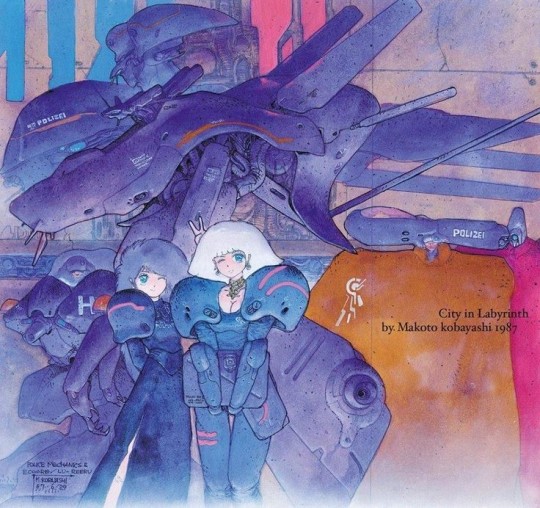
#makoto kobayashi#city in labyrinth#anime and manga#art#lineart#illustration#ink#pencil#mecha#old school art#retro scifi#traditional drawing#mixed technique
889 notes
·
View notes
Text

10 Shadows Technique
#hand practice#from hell#with this treasure i summon#foreshortening#anatomy#jjk megumi#megumi fushiguro#jujutsu megumi#jujutsu kaisen megumi#fushiguro#jujutsu kaisen fushiguro#jjk fushiguro#fushiguro megumi#megumi fanart#mahoraga#cursed technique#hand signs#ten shadows#jjk#jjk fan art#jujutsu kaisen#jjk fanart#jujutsu kaisen fanart#anime art#anime#fanart#anime fanart#oblivianiart#obliviani
379 notes
·
View notes